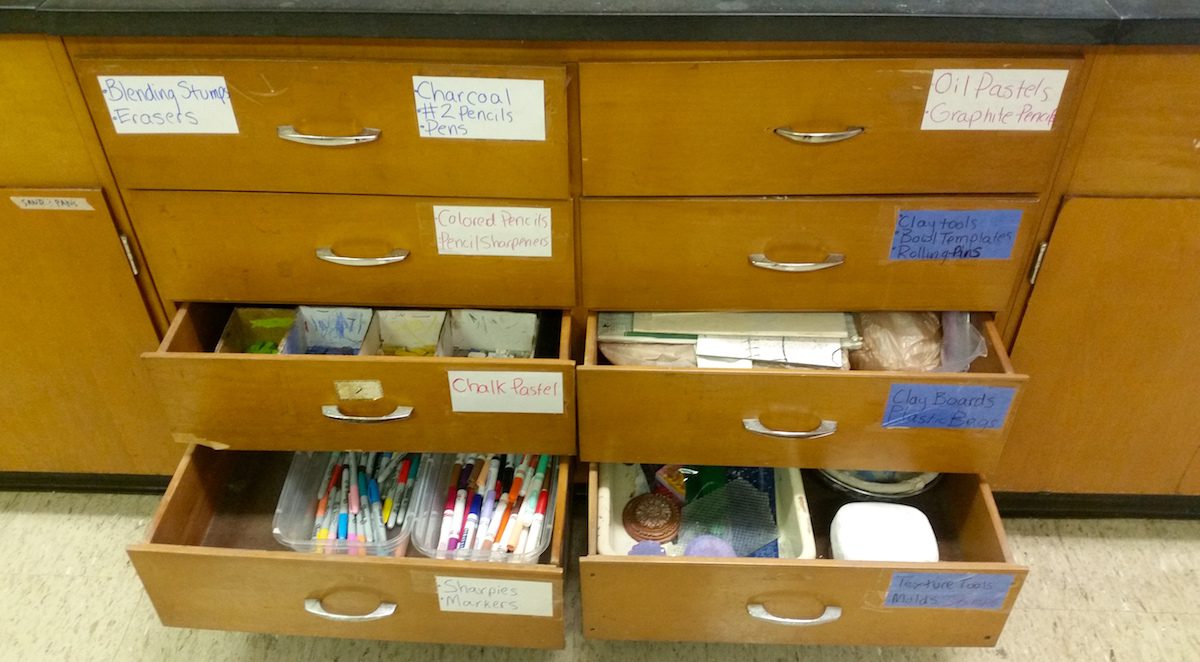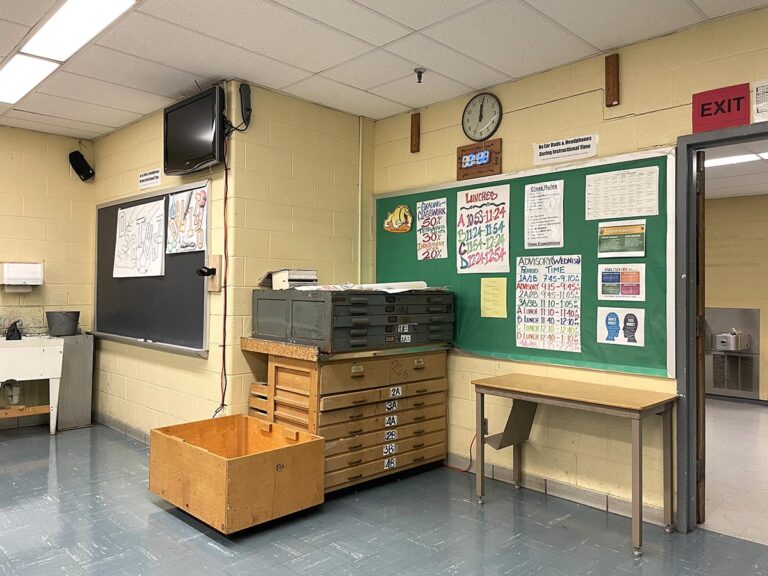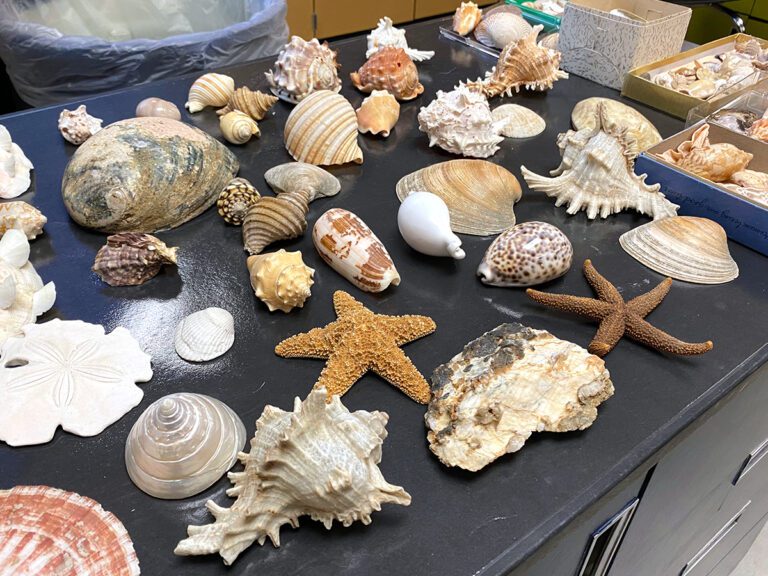Room organization has a huge impact on the learning that takes place in a space. If you value student-directed learning experiences, you need a classroom set up that supports those type of activities. Students need quick and easy access to materials and information.
Here are three things to consider when setting up your room to support student choice.
1. Make Your Supplies Visible and Accessible
When students are selecting their own supplies, they need to be able to see what’s available. In addition, they need to be able to get supplies independently. To do this, make sure materials are clearly labeled and organized. How you do this will depend on the characteristics of your specific room.
Most TAB classrooms are set up with centers around the room that students pick from. Another approach is to organize supplies in clearly-labeled drawers or cabinets. My room is arranged this way, with drawers that are color-coded by material type. Whichever approach you try, the key is to make sure supplies are visible and easily accessible. You also need to take student age into account. Text based labels are fine for older students, but kids in lower grades must have images posted as well.
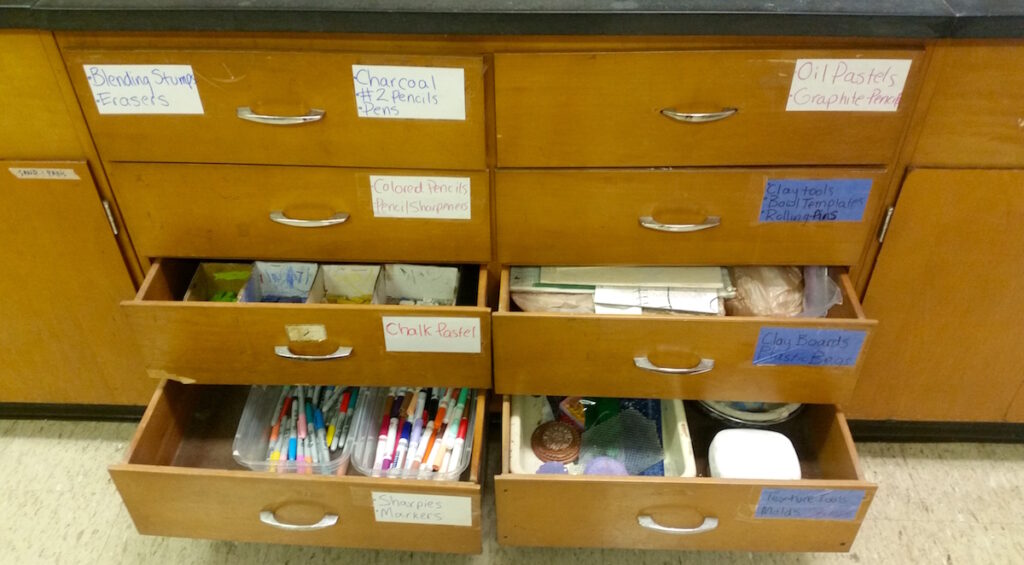
2. Use Your Wall Space
When the amount of choice students are given increases, the number of questions they have can increase as well. However, a bit of planning ahead can dramatically reduce the number of raised hands you see. Think about common questions and procedures students use and make signs or charts to address them. Point out these resources to students and model how to use them. If you have minimal room for these sort of learning supports on the wall, consider creating a labeled drawer where students can access them.
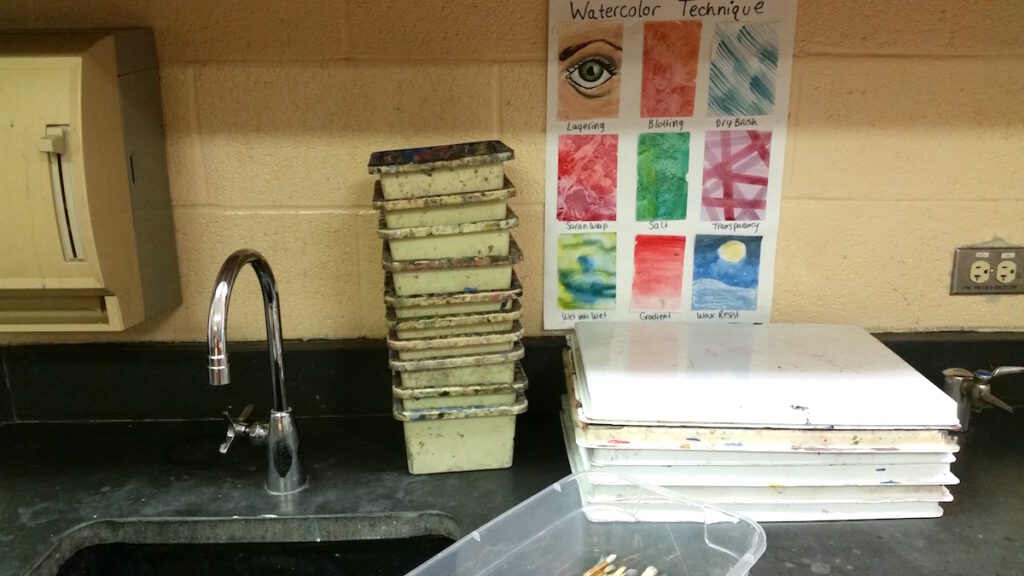
3. Use Technology
If your kids have access to laptops or phones, their access to information is limitless.The internet can function as a second classroom space accessible even from home. If you have a class website, it’s easy to link instructional videos or PowerPoint slides to help your students learn independently. The teachers at my school worked together to create a series of videos that function as an instructional hub where we can send kids that want to know how to use any of the featured media. The possibilities are endless!
Increasing opportunities for student-directed experiences in the art room doesn’t have to be a challenge. All it takes is a little organization on your part to make supplies visible, accessible, and manageable for students. When given more choice, students may just surprise you!
If you’re looking for ways to incorporate even more choice into your classroom, be sure to check out the course Choice-Based Art Education. You’ll find a balance that honors your district’s needs, your students’ needs, and your own goals and philosophies.
How do organize your room to support student choice? Share your tips in the comments!
Magazine articles and podcasts are opinions of professional education contributors and do not necessarily represent the position of the Art of Education University (AOEU) or its academic offerings. Contributors use terms in the way they are most often talked about in the scope of their educational experiences.
